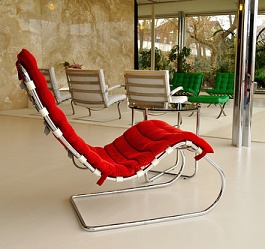
The Tugendhat Villa in Brno is also protected under the Hague Conventions
 |
"This is a significant professional and diplomatic success for the Czech Republic, as enhanced protection under the Second Protocol (to the Hague Convention on the Protection of Cultural Property in the Event of Armed Conflict) has so far been granted to only 13 cultural properties in eight countries around the world - Azerbaijan, Belgium, Cambodia, Cyprus, Italy, Georgia, Lithuania, and Mali," stated Minister of Culture Antonín Staněk. "Following the inscription of indigo dyeing on the Representative List of the Intangible Cultural Heritage of Humanity by UNESCO, which took place last week in Port Louis, Mauritius, this is another international success and recognition of the work of our experts who responsibly and at a high professional level care for the protection of cultural heritage," added the minister.
The Czech Republic is a contracting state of the mentioned Second Protocol. It is thus obligated to implement it, including taking such measures in times of peace that it deems appropriate to safeguard cultural properties within its territory against the foreseeable effects of any potential armed conflict. The registration of cultural monuments in the List of Cultural Properties under Enhanced Protection is precisely such a measure. Its essence is that cultural properties registered in this way are not utilized for military purposes and, therefore, do not represent military targets, and as such should not be subject to potential attack.
The Tugendhat Villa, which is also inscribed on the UNESCO World Heritage List, meets all three conditions for registration. It is a cultural heritage of the highest significance to humanity, it is protected by relevant national legal and administrative measures that recognize its exceptional cultural and historical value and ensure the highest level of protection, and it is not used for military purposes or to shield military objects. The party that has control over this cultural property has also made a declaration that it will not be used in this way.
The villa of spouses Greta and Fritz Tugendhat, built between 1929 and 1930, was designed by the renowned architect Ludwig Mies van der Rohe. From 2010 to 2012, the villa underwent a heritage restoration and returned to its appearance from the 1930s. The interior features exact replicas of the original furnishings. The glass wall of the villa provides a view of the garden and the city.
The English translation is powered by AI tool. Switch to Czech to view the original text source.
0 comments
add comment
Related articles
0
30.05.2019 | The Tugendhat Villa is fully booked until the end of the year; the garden can be visited
0
29.05.2019 | Ninety years ago, the construction of the Tugendhat villa began
0
26.07.2018 | Ševčík finished filming the movie The Glass Room in the Tugendhat villa
0
23.02.2018 | Filming will temporarily close the Tugendhat villa to visitors
0
16.12.2016 | Vila Tugendhat has been in UNESCO for 15 years
0
26.07.2011 | The Tugendhat Villa will open to the public in January 2012
0
21.05.2009 | European experts will evaluate the restoration plan for the Tugendhat villa
0
20.03.2007 | The development of events surrounding the functionalist Tugendhat villa












